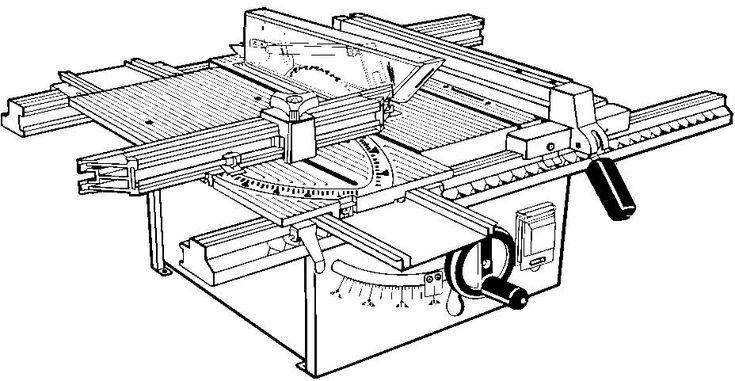Kickback is the most common problem. It can happen to even the most careful users. You can minimize the chance of kickback by properly setting the blade height, using a sharp blade, standing in the right position, using a riving knife, and ensuring that the material moves straight.
SAFETY
- Wear proper safety gear. Appropriate shoes, safety glasses, hearing protection. Masks are recommended. Gloves are not recommended.
- Ensure that your work area is well-lit and clear of obstacles/debris. Never use in a wet location.
- Keep the saw off when not cutting. Do not leave a saw running unattended.
- Use guard with a spreader (riving knife) and anti-kickback fingers for ripping or cross-cutting.
- Keep proper footing and balance at all times. Do not overreach.
- Keep the body and face to one side of the saw blade out of the line of a possible kickback. Keep hands out of the line of a saw blade.
- Do not saw freehand. Always hold the stock firmly against the mitre gauge or a rip fence to position and guide the cut.
- Focus 100% on the cut. No distractions.
- Feed stock into the blade against the direction of its rotation. Do not feed the workpiece faster than the saw can accept.
- Do not lift the guard or work near the blade while it is turning.
- Do not reach around or over moving blades.
- Do not remove saw dust or cuttings around knives by hand or with compressed air. Use a stick or brush.
- Disconnect power from the unit before touching the blade.
TOOL CHECK
- Table is flat and in good condition.
- Rip-fence and miter-gauge are both ok.
- The spreader and anti-kickback guards are installed around the blade.
- Adjustments for blade height & angle work ok.
- Blade mount – Blade is in the right direction, and is held tightly to the arbor . No lateral wobble.
- Blade condition – Blade is flat and not warped. Teeth are present, sharp, and clean.
- Electrics – switch on/off ok, cord & plug are safe.
- Running – sounds ok and no vibration.
PREPARE TO USE
- Wear proper safety gear. See section 1.
- Do a tool check. See section 2.
- Use the correct blade for your cut.
- Ensure that the riving knife and blade guards are in place and in good condition.
- Check the workpiece for obstructions or risks (e.g. nails, staples, stones, loose knots).
- Set the blade height correctly (⅛” above the material) and lock the blade angle adjuster.
- If ripping then ensure that the rip-fence is locked in position after the desired width has been set. If cross-cutting then do not use the fence – use a miter-gauge instead.
- Use a push stick when ripping narrow or short stock. Use the push stick to remove the cut piece from between the fence and the blade.
- Ensure adequate support to hold the work piece for the entire length of the cut.
After your cut
- Allow the blade to stop spinning before moving or adjusting anything.

